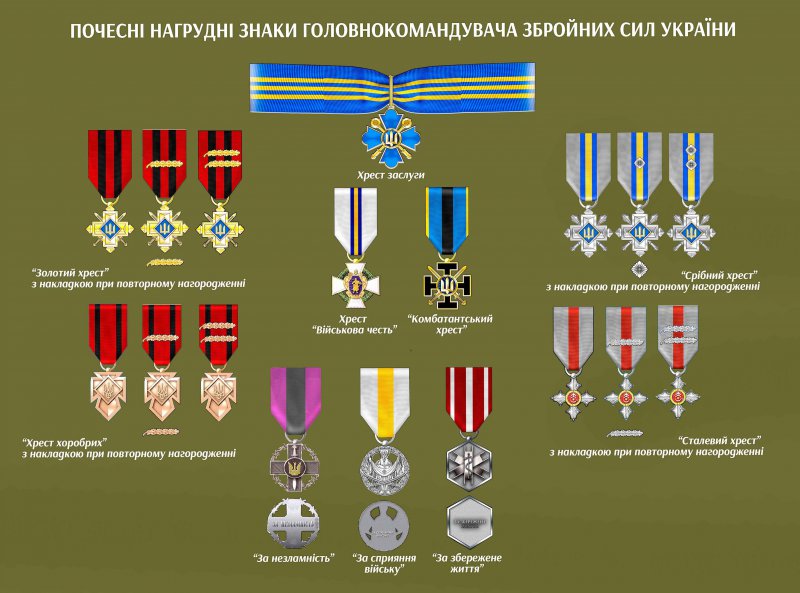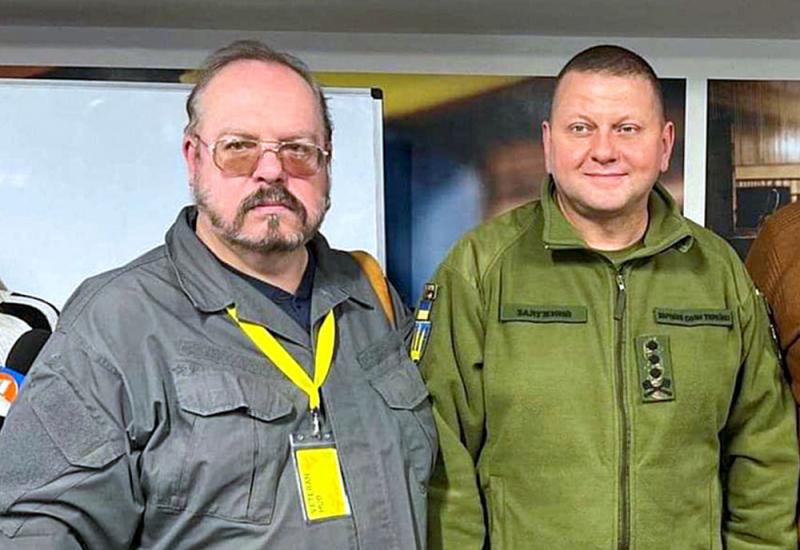"The Ukrainian Order of the Steel Cross is a copy of the Nazi Iron Cross," was the nonsense spread on social media at the end of last year by provocateurs and ignorant russian telegram channels, who, as they say, hear the bell ringing but don't know where it comes from. Therefore, the purpose of this text is to shed light on why it is absolutely wrong to compare the Ukrainian "Steel Cross" with the Nazi "Iron Cross," what is their difference, and, in general, what are the peculiarities of the symbols and honorary badges of the Armed Forces of Ukraine.
For qualified explanations, the editorial staff of Kyiv Polytechnic turned to the designer of this and other awards of the Ukrainian state, Associate Professor of the Department of Graphics at the Educational and Scientific Publishing and Printing Institute of Igor Sikorsky Kyiv Polytechnic Institute and, at the same time, Chief Specialist of the Strategic Communications Department of the Office of the Commander-in-Chief of the Armed Forces of Ukraine, Honored Artist of Ukraine Oleksiy Rudenko.
- Let's start with a little bit of history. "The symbols of the Armed Forces of Ukraine are based on the Cossack heritage," said Oleksii Rudenko, "The period of creation of the coats of arms of the Zaporizhzhia Sich lasted from the end of the 16th to the 18th century. Most of the flags have an image of a cross. The Cossack cross of the Zaporozhian Sich has clear lines that expand from the center. If we look at the cross from the Armed Forces of Ukraine's award series, it is similar to the traditional church cross in the Orthodox tradition, and the sign in the center of the medal is the coat of arms of the Ostroh princes. This sign appears on the Cossack flag in the painting "The Battle of Orsha," which depicts the battle between the Lithuanian-Rusyn-Polish army under Prince Kostiantyn Ostrozky and the Muscovite regiments of Voivode Ivan Chelyadnin in 1514. In 1917-1921, the cross was one of the main symbols of the Ukrainian People's Republic (UPR). For example, the Iron Cross "For Winter Campaign and Battles" was the only military order of the UPR army.
By the way, crosses were the basis for awards in the United States, Great Britain, France, Poland, and the Czech Republic. The cross also appeared on the military awards of the former Prussia and Germany. The Order of the Iron Cross (Eisernes Kreuz) was created in 1813 by King Friedrich Wilhelm III of Prussia. This award was given for military merit during the liberation of the Kingdom of Prussia from Napoleon's troops. Later, it was awarded to soldiers of the German Empire and Nazi Germany (until 1945). The order depicts the year of issue, a crown symbolizing power, the king's initials, and an oak branch, a symbol of immortality and indestructibility. The 1871 and 1914 editions were created during the reign of King William I. They were awarded for services in the French and Prussian War and the First World War. The versions of the awards from those years bear the year of issue, the crown, and the king's initials. In 1939, the award was adapted to recognize the Wehrmacht. At Hitler's initiative, it became a symbol of Nazi Germany. In the 1939 version, the main elements of the order were the year and the swastika. In terms of shape, the Iron Cross of Germany has always had rounded lines throughout its history. This, in short, is about history and design.
- Oleksii Valeriiovych, I am sure that you, the son and grandson of artists, a well-known heraldist, designer of numerous state and departmental insignia of Ukraine, in particular, the insignia of the Order of Bohdan Khmelnytskyi and the Order of Princess Olha, author of the official symbols of the state, etc., found this work on behalf of the Commander-in-Chief of the Armed Forces of Ukraine, General Valerii Zaluzhnyi, extremely interesting. How did you create your own Steel Cross and other related awards?
- It is obvious: art and science are two different "languages" of human thinking. However, they are interconnected. For example, heraldry is a special historical discipline that studies coats of arms, as well as the traditions and practices of their use. It also studies colorful emblems belonging to individuals, families, and communities. In addition, it is closely related to genealogy, symbolism, emblematics, phaleristics (the science of metal jewelry that served as military insignia - author), vexillology (the discipline of flags, banners, banners, standards - author), etc. I mean the fact that when I create a new military insignia, I use not only my own experience as a graphic artist, but also a large scientific and historical layer that I have acquired as a researcher throughout my life. This was the case with the Steel Cross, the Cross of the Brave, and the Golden Cross.
The heroic resistance, honor and victory of our soldiers deserve special honors. By the way, on the occasion of the Day of the Armed Forces of Ukraine, StratCom Studio of the Armed Forces of Ukraine together with Pryamyi TV channel prepared a series of five television programs called "Awards of the Commander-in-Chief". This is, so to speak, about the relevant documentary video footage that can help those interested in the history of the creation of a number of our awards. I also advise you to familiarize yourself with the "Regulations on Honorary Badges".
- The Commander-in-Chief of the Armed Forces of Ukraine has implemented the right granted by the President of Ukraine to award the best in the country into specially designed rarities. They do not reproduce the design of state awards or insignia of the Ministry of Defense of Ukraine, but are unique awards of the Commander-in-Chief. Could you please tell us more about their peculiarity?
- We are talking about the Cross of the Brave, a special award intended for any serviceman of the Armed Forces of Ukraine, regardless of age, gender, rank or years of service. The only and main condition is the display of personal courage in combat. The bravest warriors can receive the Cross of the Brave three times - for each victory, another oak branch is attached to the ribbon of the cross, a sign of repeated awarding.

The ribbon of the next highest award of the Commander-in-Chief, the Golden Cross, can also hold three oak branches. But courage alone is no longer enough to receive the Golden Cross. This award is intended primarily for sergeants and junior commanders who have taken command in a difficult combat situation and handled the military situation as well as officers. The word "golden" in the name of the award itself means, I would say, an irresistible drive for leadership.
I would like to emphasize that the visual similarity of the awards of the Commander-in-Chief of the Armed Forces of Ukraine to the insignia of the UPA does not mean copying them either stylistically or in content. They have different attributes and are awarded according to the latest canons of awarding.

